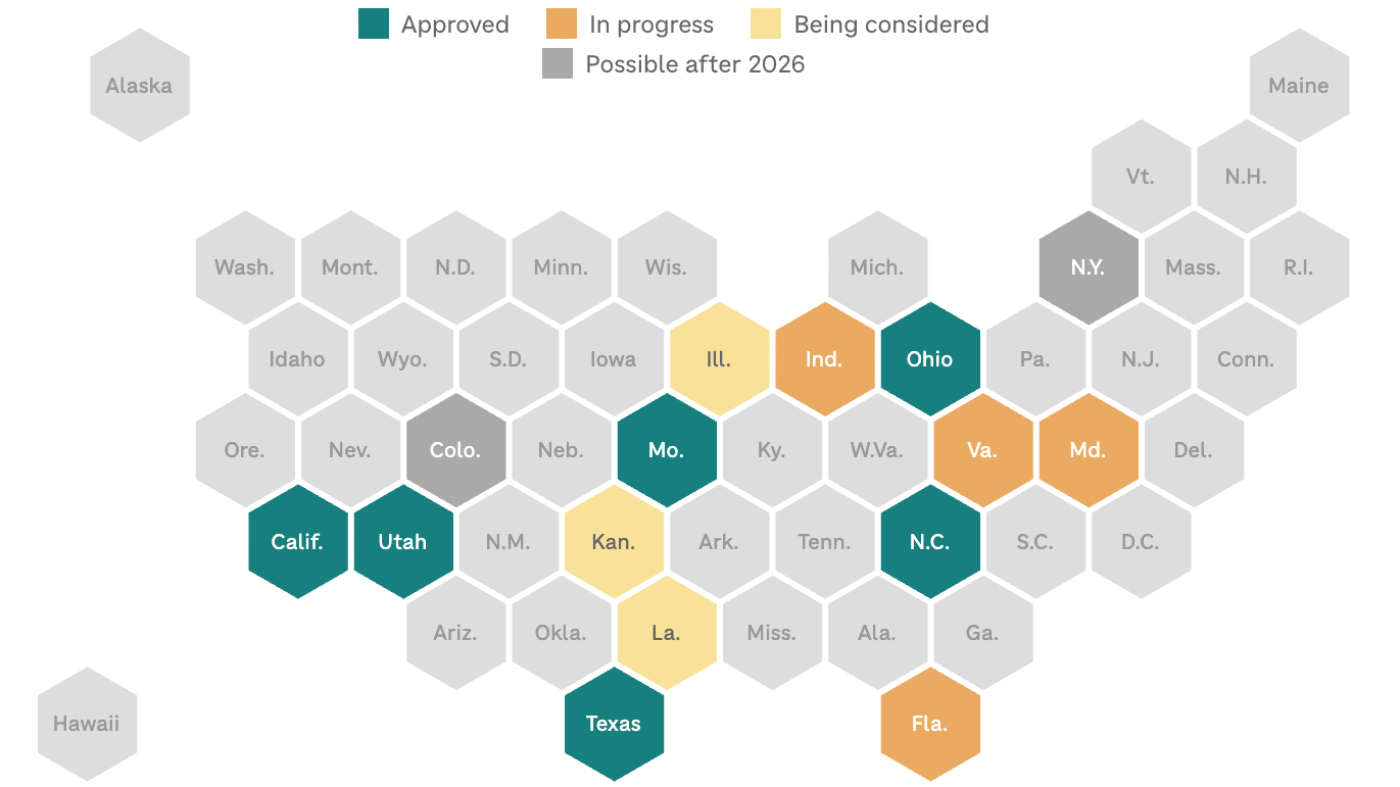World
Netherlands to ask opt-out from EU asylum rules 'as soon as possible'

The four-party cabinet in the Netherlands has vowed to establish “the strictest asylum regime ever” to curb irregular migration.
The Dutch government of Prime Minister Dick Schoof has confirmed its intention to ask “as soon as possible” for an opt-out clause from the European Union’s migration and asylum rules, an unprecedented move from a founding member state.
The plan, previewed in July after Schoof took office, is considered far-fetched and symbolic, with little to no chance of succeeding as it would require re-tweaking highly sensitive legislation and could open the floodgates for similar demands.
It is unlikely that other capitals would be willing to accommodate The Hague’s wish: excluding the Netherlands from the bloc’s migration system would inevitably cause a wave of asylum seekers towards neighbouring countries, creating a crisis scenario.
However, the request represents a new brazen attempt by an EU country to challenge established laws in a desperate quest to curb irregular migration. It comes on the heels of Germany’s decision to re-establish border controls on all of its nine land borders, casting doubt over the functioning of the passport-free Schengen Area.
“The government will announce in Brussels as soon as possible that the Netherlands wants an opt-out of European asylum and migration regulations,” reads the government programme unveiled on Friday afternoon.
“As long as” this opt-out clause is not granted, the programme adds, the country will focus on implementing the New Pact on Migration and Asylum, the all-encompassing reform the EU completed in May after almost four years of hard-fought negotiations.
The Pact’s main novelty is a system of “mandatory solidarity” that will give countries three options to manage asylum seekers: relocate a certain number of them, pay €20,000 for each one they reject, or finance operational support. The Netherlands will choose financial support rather than reception, the programme confirms.
In anticipation of the Dutch announcement, the European Commission made it clear that all member states are bound by existing rules and that any exemption to their compliance should be negotiated before – not after – they are approved.
“We have adopted legislation. It’s adopted. You don’t opt out of adopted legislation in the EU,” a spokesperson said earlier in the day on Friday. “That’s a general principle.”
In May, the Netherlands voted in favour of all the laws that make up the New Pact.
The overhaul will take two years to enter into force. Member states have to submit implementation plans before the end of the year, detailing the administrative, operational and legal steps they intend to take to make the laws a reality.
‘Strictest regime ever’
The programme presented on Friday was agreed upon by the four parties that make up the ruling coalition in the Netherlands: the far-right, nationalist PVV; the conservative-liberal VVD; the populist, pro-farmers BBB; and the upstart, centre-right NSC.
Schoof, a technocrat, does not belong to any of them and was surprisingly picked as a consensus figure to captain the new political era.
The opt-out proposal is included in a wider chapter devoted to migration that features an extensive raft of measures meant to build up the “strictest asylum regime ever,” one of the key promises underpinning the cabinet.
The government argues the Netherlands can no longer cope with the “large influx” of asylum seekers asking for international protection, many of whom enter the EU through another member state and then travel across borders until arriving in Dutch territory.
About 48,500 asylum seekers and family members entered the country in 2023. Syrian, Turkish, Yemeni, Somali and Eritrean were among the most common nationalities.
According to the programme, the government will introduce emergency legislation with broad powers to freeze asylum applications and deport people without residence permits, “including by force.” Asylum seekers will be asked to return to their country of origin as soon as it is considered “safe,” a concept contested by NGOs.
The Netherlands also plans to work with “like-minded and surrounding countries” to manage a sudden influx of irregular migrants and build a “mini Schengen” area to intensify security surveillance.

World
European Commission to unveil €1.2 trillion plan to upgrade the EU's electric grids, leak shows
The European Commission has identified eight key energy projects under the “Grids Package” to be announced this week, Euronews has learned. The plan aims to increase electricity transmission across the EU27. The EU executive will also endorse storage and hydrogen projects.
World
Chiefs’ offensive line woes deepen as Wanya Morris exits with knee injury against Texans
KANSAS CITY, Mo. (AP) — The injury-riddled Kansas City Chiefs lost left tackle Wanya Morris to a left knee injury on the first play against the Houston Texans on Sunday night, leaving their makeshift offensive line with rookie Esa Pole protecting Patrick Mahomes’ blind side.
Not exactly an ideal situation against Danielle Hunter, Will Anderson Jr. and one of the best pass rushes in the NFL.
Then things got worse for Kansas City: Trent McDuffie hurt his knee later in the first quarter, when the former All-Pro cornerback jumped high in the air while trying in vain to defend a 46-yard pass from C.J. Stroud to Nico Collins.
Meanwhile, the Texans lost running back Nick Chubb to a rib injury. That left Dare Ogunbowale to back up Woody Marks.
The Chiefs already were forced into a patchwork offensive line after rookie left tackle Josh Simmons went on injured reserve this week following surgery to repair a fractured and dislocated wrist, and right tackle Jawaan Taylor was inactive due to a triceps injury.
That meant that primary backup Jaylon Moore was the starter at right tackle and Morris was in the lineup at left tackle.
The Chiefs also were missing standout right guard Trey Smith because of an ankle injury. Mike Caliendo started in his place.
Pole played two seasons at a California junior college and two at Washington State. He went undrafted in April and signed with the Chiefs the following month. He also had a stint with the Jets before returning to Kansas City in late October.
___
AP NFL: https://apnews.com/hub/nfl
World
Chechen leader threatens Zelenskyy amid drone strike, echoes alleged assassination plot

NEWYou can now listen to Fox News articles!
Chechen leader Ramzan Kadyrov’s threats against Ukraine following a drone strike echo a 2022 plot to infiltrate Kyiv and target President Volodymyr Zelenskyy, a former Ukrainian government official has said.
The leader’s latest threat came after a Ukrainian drone reportedly struck a high-rise building near Kadyrov’s home in Grozny on Nov. 5.
The strike prompted the Chechen strongman to vow retaliation in an online video post, according to Reuters.
“This new threat would just be another assassination threat for Zelenskyy. The Chechens are really serious about revenge,” a former government official told Fox News Digital.
RUSSIAN CRUISE MISSILES HIT US COMPANY IN MASSIVE UKRAINE STRIKE AMID TRUMP’S PEACE PUSH
Head of Chechnya Ramzan Kadyrov smiles prior to Russian-UAE talks on December 6, 2023, in Abu Dhabi, United Arab Emirates. (Getty Images)
“But in Kyiv they are not panicking about this like they were in 2022,” the former official said under condition of anonymity.
“Zelenskyy is now better protected, feels more powerful and is less fragile,” they said.
The recent Ukrainian strike, reported by Reuters, hit the 28-story Grozny-City tower that sits roughly 830 meters from Kadyrov’s home.
TRUMP EYES NEW SANCTIONS ON PUTIN AFTER LARGEST-EVER DRONE ATTACK
Ramzan Kadyrov is one of Vladimir Putin’s most aggressive enforcers. (Rob Welham/Universal History Archive/Universal Images Group via Getty Images)
Kadyrov, who is loyal to Russia, later allegedly confirmed the attack in a Telegram post, stating there were no casualties, but he condemned the strike as making “no tactical sense.”
He also warned that retaliation was imminent.
“Starting tomorrow and in the course of the week, the Ukrainian fascists will be feeling a stern response,” he threatened.
Unlike Ukraine’s strike, he added, “we will not be making a cowardly strike on peaceful targets,” per Reuters.
Ukrainian attacks have hit sites in Chechnya before now, including a police barracks and a training academy. Chechen units were also deployed during Russia’s 2022 invasion and were among the Kremlin’s most loyal forces.
RUSSIA LAUNCHES MASSIVE DRONE AND MISSILE BARRAGE ON UKRAINE HITTING KYIV, OTHER TARGETS THROUGHOUT COUNTRY
Russian and Chechen soldiers in a devastated Mariupol neighborhood close to the Azovstal frontline. (Maximilian Clarke/SOPA Images/LightRocket via Getty Images)
At the time of the 2022 invasion, the official said there was intense anxiety in Kyiv.
“At the beginning of the large-scale invasion in 2022, Chechens were sent to Kyiv to murder top politicians,” the former official said.
“This included Volodymyr Zelenskyy and top politicians from the government and security services and Parliament, and many other agencies.
“Zelenskyy and Yermak were very scared,” they claimed. “They were calling from the office, asking some people in the military and security service to secure the metro station in Kyiv.”
The source said one metro station in Kyiv was a potential infiltration route for the Chechens into Zelenskyy’s presidential bunker.
RUSSIAN ATTACK ON UKRAINE LEAVES 25 DEAD IN TERNOPIL AFTER MASSIVE OVERNIGHT STRIKES
Ukraine’s President Volodymyr Zelensky gives a press conference in Kyiv on February 26, 2025, amid the Russian invasion of Ukraine. (Tetiana Dzhafarova/AFP via Getty Images)
At the time, the station in Kyiv that was deep underground and near the presidential bunker, was viewed as the most vulnerable entry route, the source said.
“They were afraid that Chechens would get to the bunker through this metro station, but in the end the Chechens were killed before they reached Kyiv.
“They tried to reach Kyiv, somehow downtown, somehow via the river, but it’s quite a complicated way to get there,” the former official said.
Meanwhile, with the Nov. 5. Grozny strike landing so close to his home, Kadyrov, already one of Putin’s most aggressive enforcers, is signaling a harsher stance as attacks reach inside Russian territory.
The Moscow Times reported that the drone struck a building that houses regional government offices, including the Chechen Security Council and agencies connected to tourism and religious affairs.
CLICK HERE TO DOWNLOAD THE FOX NEWS APP
Despite the rhetoric, the former Ukrainian official claimed Zelenskyy is unfazed this time around.
“These days, Zelenskyy isn’t afraid of Kadyrov’s actions against him or the Ukrainian people. Zelenskyy is feeling very powerful right now,” they added.
Fox News Digital has reached out to Zelenskyy’s office for comment.
-

 Alaska2 days ago
Alaska2 days agoHowling Mat-Su winds leave thousands without power
-
Ohio4 days ago
Who do the Ohio State Buckeyes hire as the next offensive coordinator?
-

 Politics6 days ago
Politics6 days agoTrump rips Somali community as federal agents reportedly eye Minnesota enforcement sweep
-

 News6 days ago
News6 days agoTrump threatens strikes on any country he claims makes drugs for US
-

 World6 days ago
World6 days agoHonduras election council member accuses colleague of ‘intimidation’
-

 Texas2 days ago
Texas2 days agoTexas Tech football vs BYU live updates, start time, TV channel for Big 12 title
-

 Politics6 days ago
Politics6 days agoTrump highlights comments by ‘Obama sycophant’ Eric Holder, continues pressing Senate GOP to nix filibuster
-

 Politics1 week ago
Politics1 week agoWar Sec Pete Hegseth shares meme of children’s book character firing on narco terrorist drug boat
























